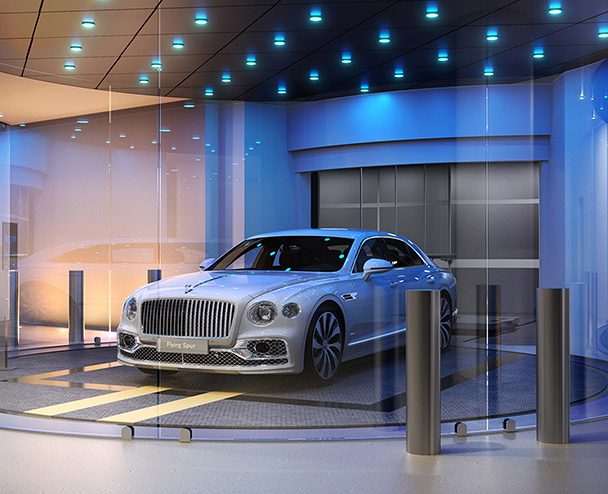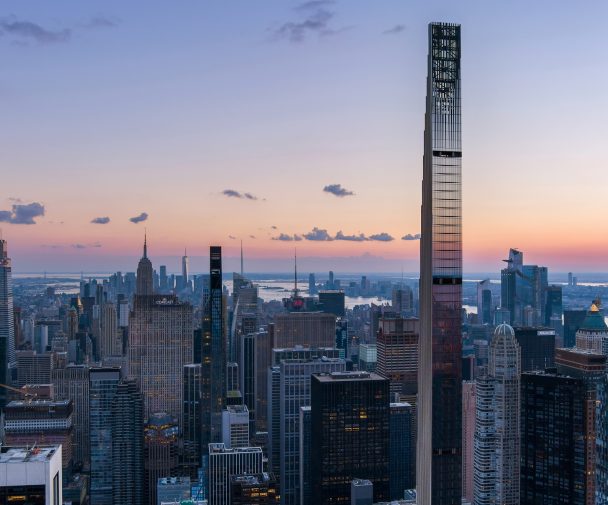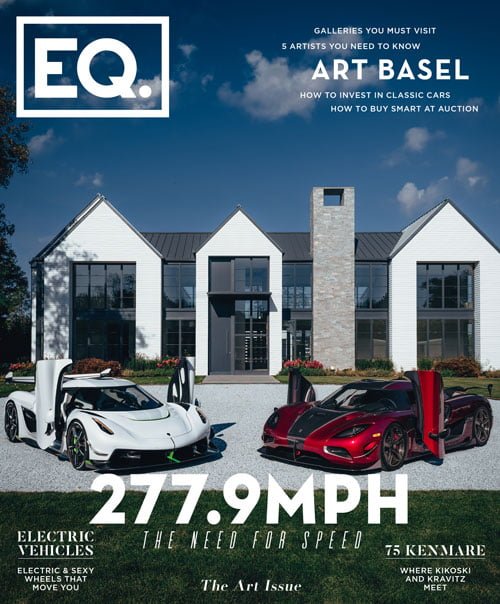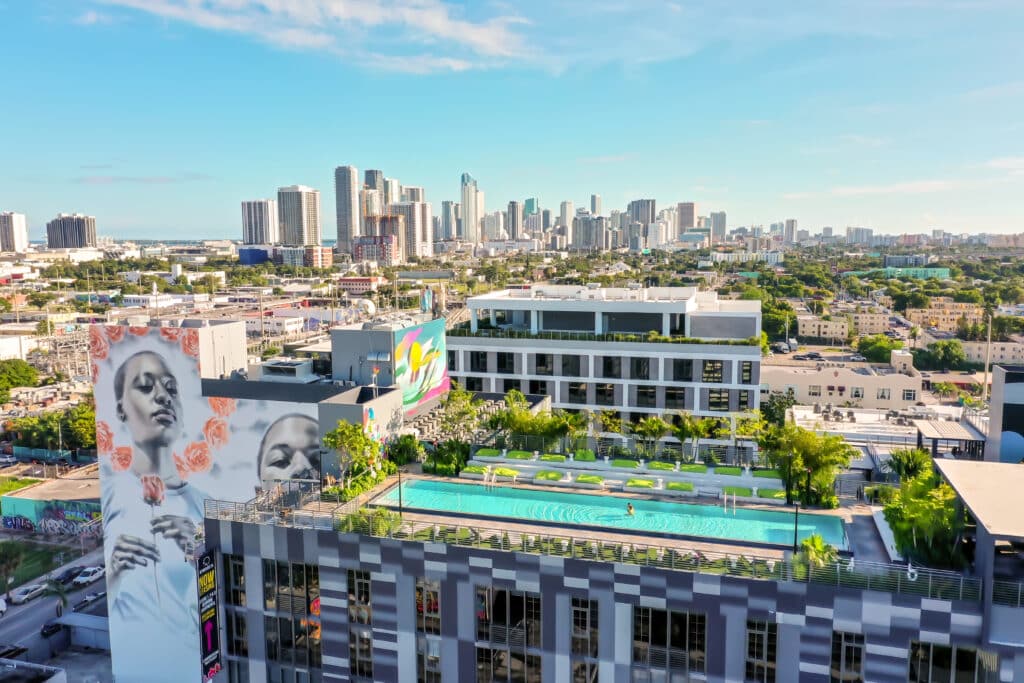
Wynwood Strikes Back
The surge in development in the artist colony continues
Written by A J Sidransky | Imagery Courtesy of Kobi Karp Architects
Once the hot, dusty home to single-story warehouses, Wynwood, FL has become a premier location for art, dining, shopping, and nightlife. It’s of little surprise then that residential use continues to grow and has been joined by office and hotel development to continue the evolution of Wynwood as a living experiment for a 21st century lifestyle. Spurred by the introduction of the Second Saturday Art Walk and Art Basel in 2002, Wynwood has become a magnet for artists worldwide. The unique windowless facades on many of the areas buildings and the murals that adorn them are unique in the art world.
At the core or Wynwood’s fame is Wynwood Walls, conceived by the late Tony Goldman and opened in 2009. Goldman envisioned this largest outdoor graffiti-art and street art installation as critical to its artform, which Goldman considered undervalued and underappreciated. Along with Jeffrey Deitch, he curated the first successful year of the project in 2009 and expanded it in 2010 to include ten more walls and Wynwood Doors, a nod to portrait galleries.
The most recent addition to the art scene is the Wynwood Museum of Graffiti which opened a few months ago and features the art on permanent exhibition of many of the earliest and most respected artist who gave gravitas to the art form.
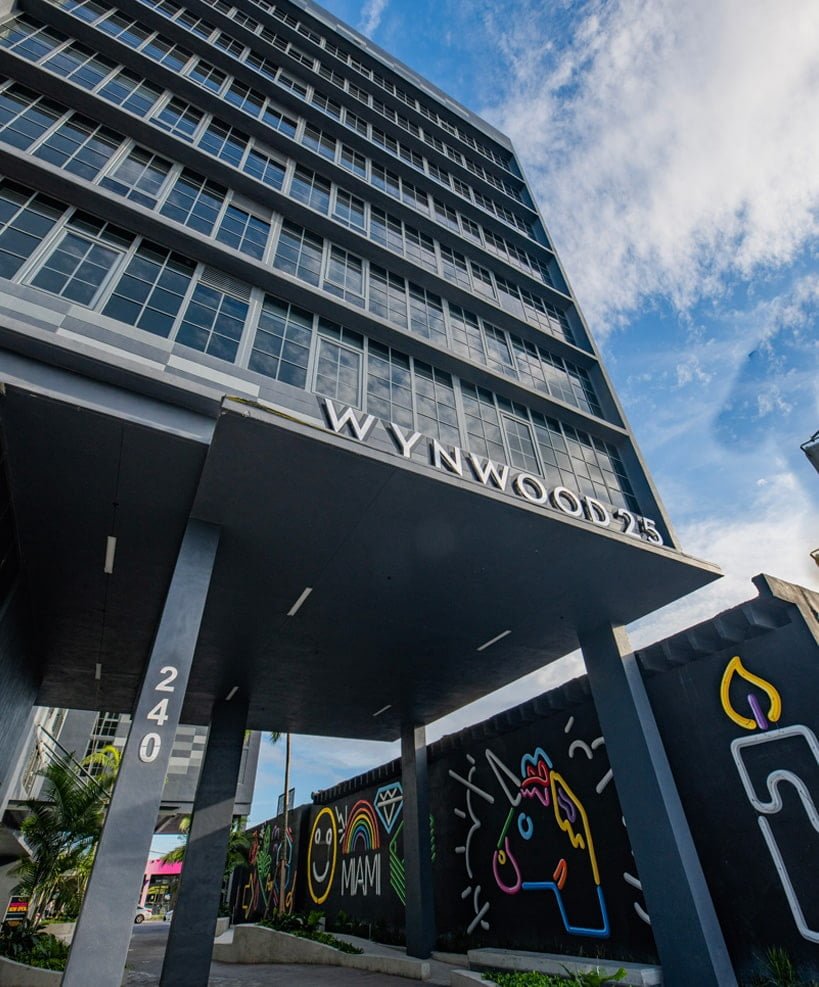

Residential Life Amid Art
Prior to 2019, Wynwood boasted 413 apartment units in fifteen properties. That number was expected to increase by 175 units by the end of 2019. There are currently another 757 units under construction.
One of the most interesting residential properties is Wynwood 25, which offers state-of-the-art micro-apartments. Micro-apartments are defined as having between 175 and 350 square feet designed to accommodate living space, sleeping space, bath, and kitchenette. Common throughout Europe, Japan, Hong Kong, and becoming more common in North America, micro-apartments are in high demand by the young populations of fully integrated live/work/play communities like Wynwood.
Wynwood 25, which overlooks Wynwood Walls, is one of the premier residential locations in the neighborhood. It features 288 units on nine floors. Completed in 2019 and designed by Kobi Karp Architects, based in Miami, the residential units have been and continue to be wildly successful. Jordan Karp, a representative for Kobi Karp says, “the property offers everything one needs for the perfect home; location, amenities, luxury, convenient retail services.” The amenity package at Wynwood 25 includes gym and yoga studio, coffee lounge, a 12,000 square foot ‘green’ courtyard, bike and package storage, dog wash, and a rooftop pool and grill. Those who choose to make Wynwood home are known as ‘Wynners’ or ‘Wynnovators.’
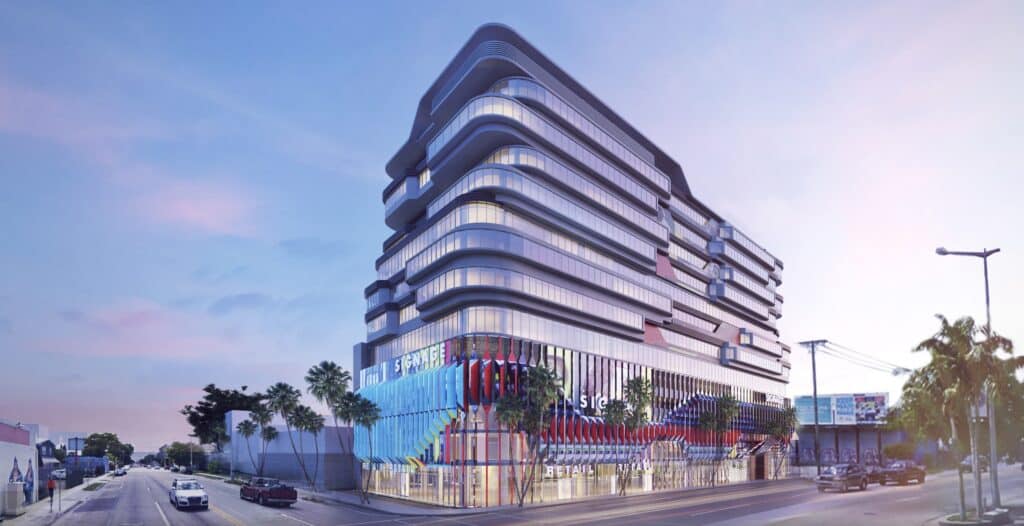
New Uses and Growth
Wynwood is now experiencing the arrival of both office and hotel development. Notably, at the corner where downtown Miami meets Wynwood, New York-based R&B Realty Group of has begun construction of a $76 million office and retail project know as Gateway. On lots assembled in 2016, formerly improved with warehouse buildings, the new building will contain approximately 185,000 square feet of office space and approximately 34,000 of retail space. Completion is projected for 2021.
Wynwood is also getting a Moxy Hotel. Moxy’s brand is particularly popular with millennials, a primary demographic for Wynwood overall. The project is a joint venture between Dolphin Capital Partners and Baywood Hotels. The property will contain 120 rooms in eight stories. David Grutman’s Groot Hospitality will handle food and beverage.
Is this kind of growth good for Wynwood? “Yes,” says Jordan Karp, of Kobe Karp. “Neighborhood residents can have a business in a retail space on Wynwood’s main cross streets, or an office above that, and their living space all in one building, complex, or neighborhood. Wynwood’s thoroughfares offer the best of restaurants, shopping, galleries, and Wynwood Walls. Where else would you need to go?”
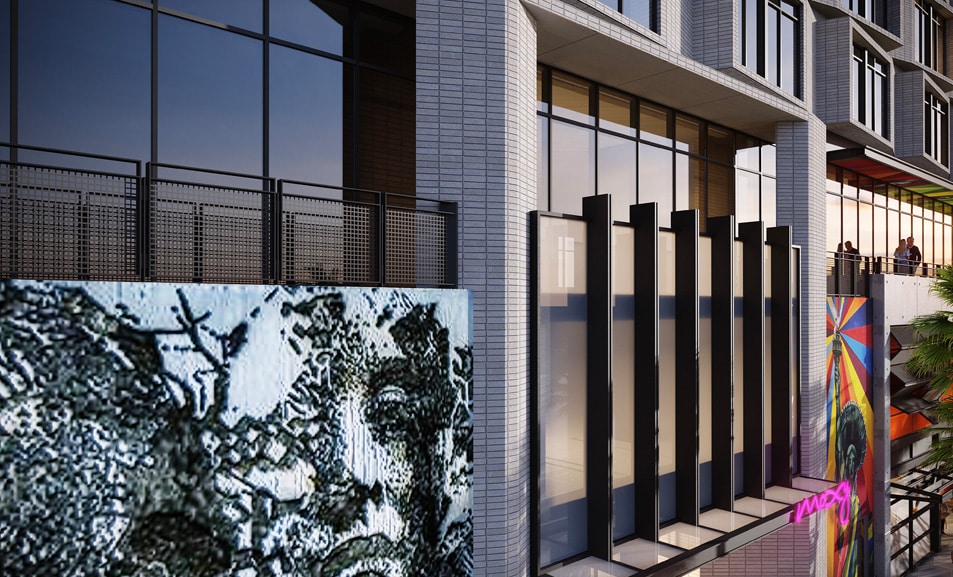
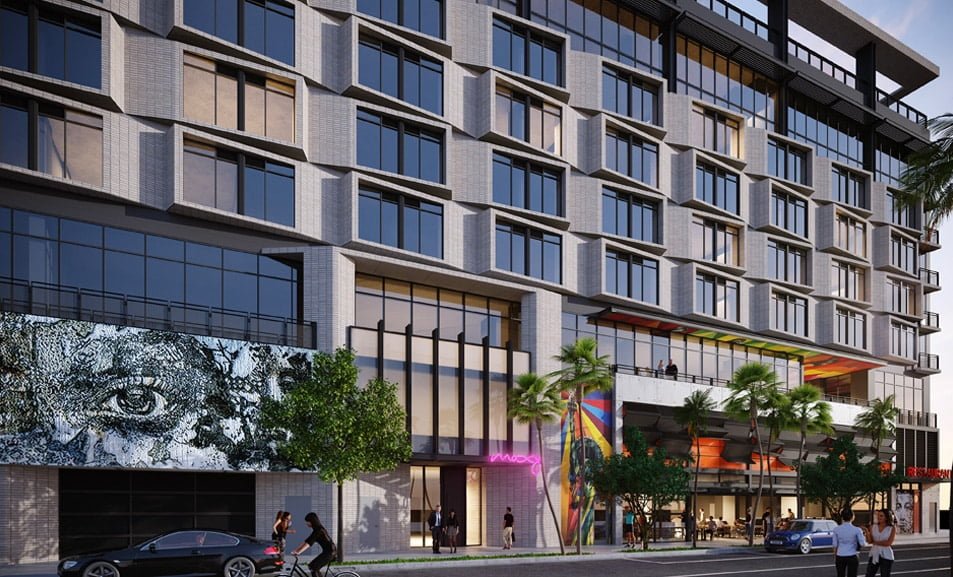
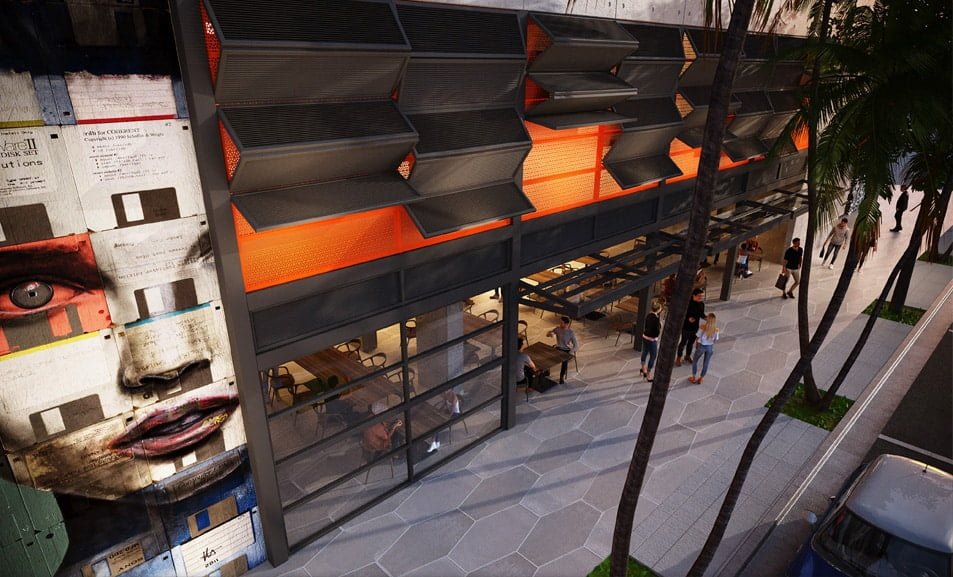
The Future
Where is Wynwood heading? Will it go the way of SoHo in New York City, which began its reinvention as an artist neighborhood filled with galleries and avant-garde shops, losing its edginess as members of the monied class moved in to be closer to the art they patronized? Or will it be able to hold onto its character while melding with more mainstream office and commercial uses and residents?
Despite the fact that a few galleries and restaurants have relocated outside of Wynwood, the difference may be that those relocating businesses are spilling over into adjacent neighborhoods like Doral and Little Haiti, revitalizing those areas as well. The pattern seems to be more one of growth than displacement. New galleries, museums, and dining experiences are still establishing themselves in Wynwood.
The Wynwood Business Improvement District, of which Albert Garcia is the chairmen, is well aware of the potential dark-side of increasing development in the fragile neighborhood ecosystem.
According to a representative of the BID, Taylor Cavazoz, “In 2015, Wynwood was rezoned from an industrial zone into a mixed-use residential neighborhood. As part of this rezoning, the Wynwood BID created the Wynwood Design Review Committee (WDRC) to approve all large projects and make sure they reflect the artistic character of the area.” According to the website of the City of Miami government, “the purpose of the WDRC is to review and recommend to the Director of Planning and Zoning and the Urban Development Review Board… whether the design of developments and/or improvements to properties within the boundaries of the [Neighborhood Revitalization District] are compatible with the cultural and architectural character of the Wynwood Arts District and guidelines that may be adopted from time to time.”
In addition, the BID requires that, “All newly constructed principal building ground floor facades along primary and secondary frontages in [the Urban Center Transect Zone] and [Urban Core Transect Zones] shall include art or glass treatment, and art or glass treatment shall be of a design to be approved by the Planning Director with the recommendation of the WDRC.”
All this is intended to maintain the current ambiance and character of Wynwood, but time will tell whether the artists and current ‘Wynners’ and ‘Wynnovators’ continue to move or are chased out.
Related Articles
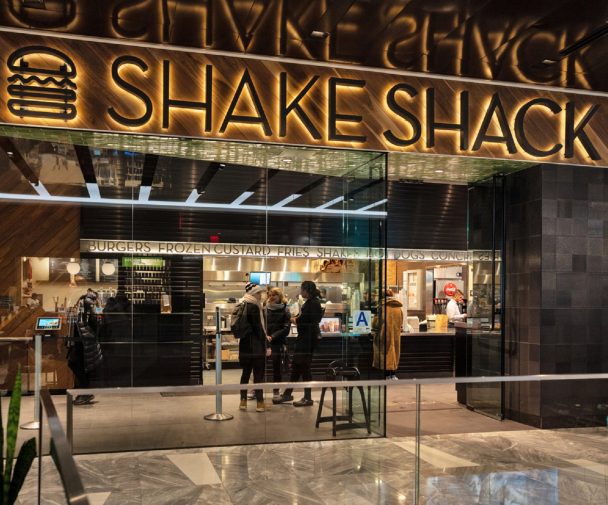
The Return of the Chain Stores
Real estate investors apprehensive about prospective tenants' timelines
Read More
ADVERTISE WITH EQ
ebunn@equicapmag.com
dhilpert@equicapmag.com
Popular Posts



